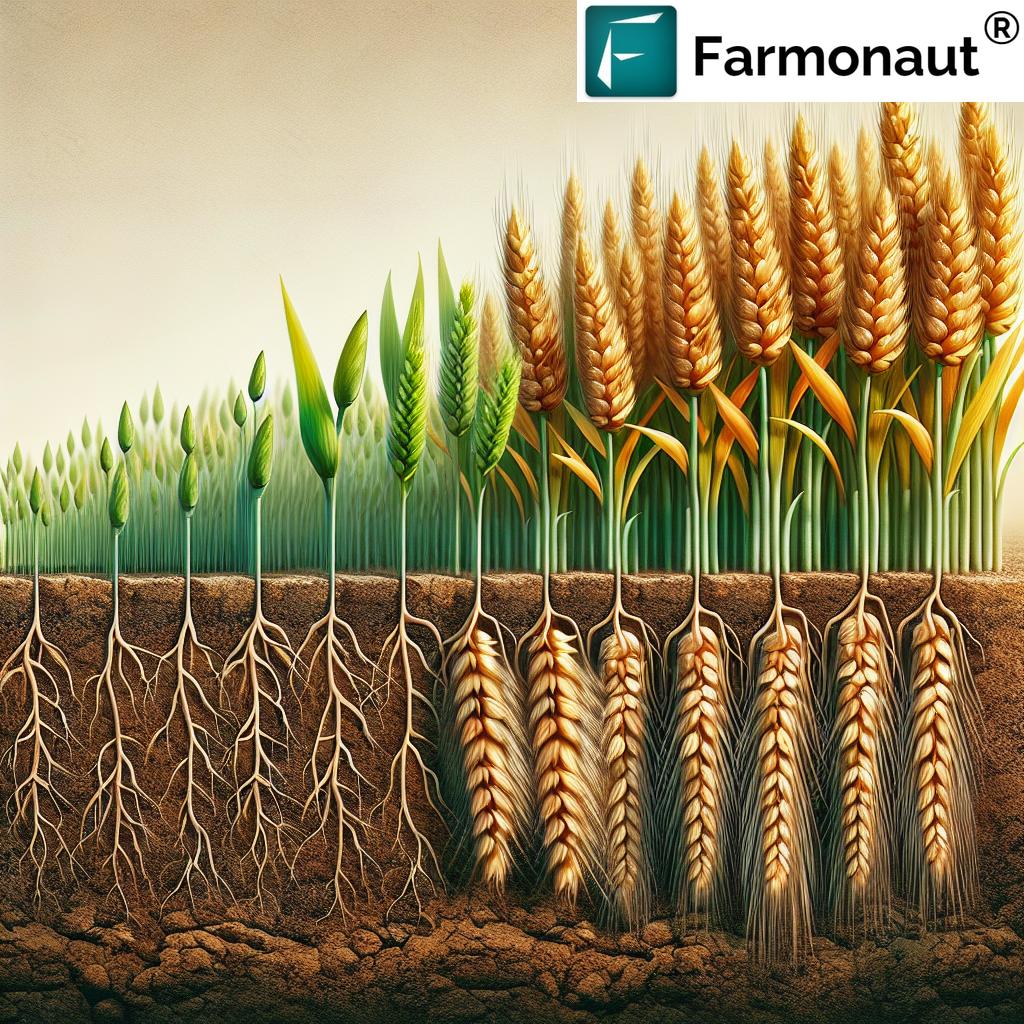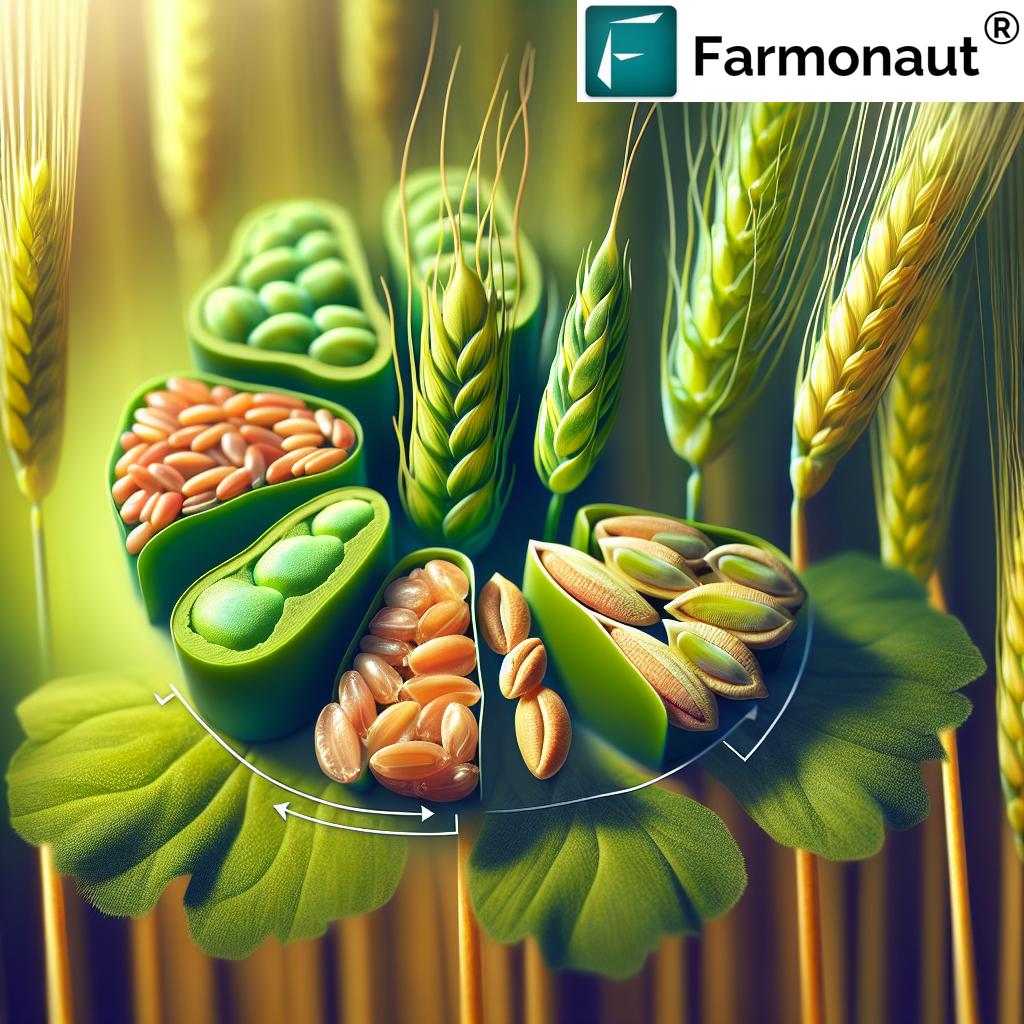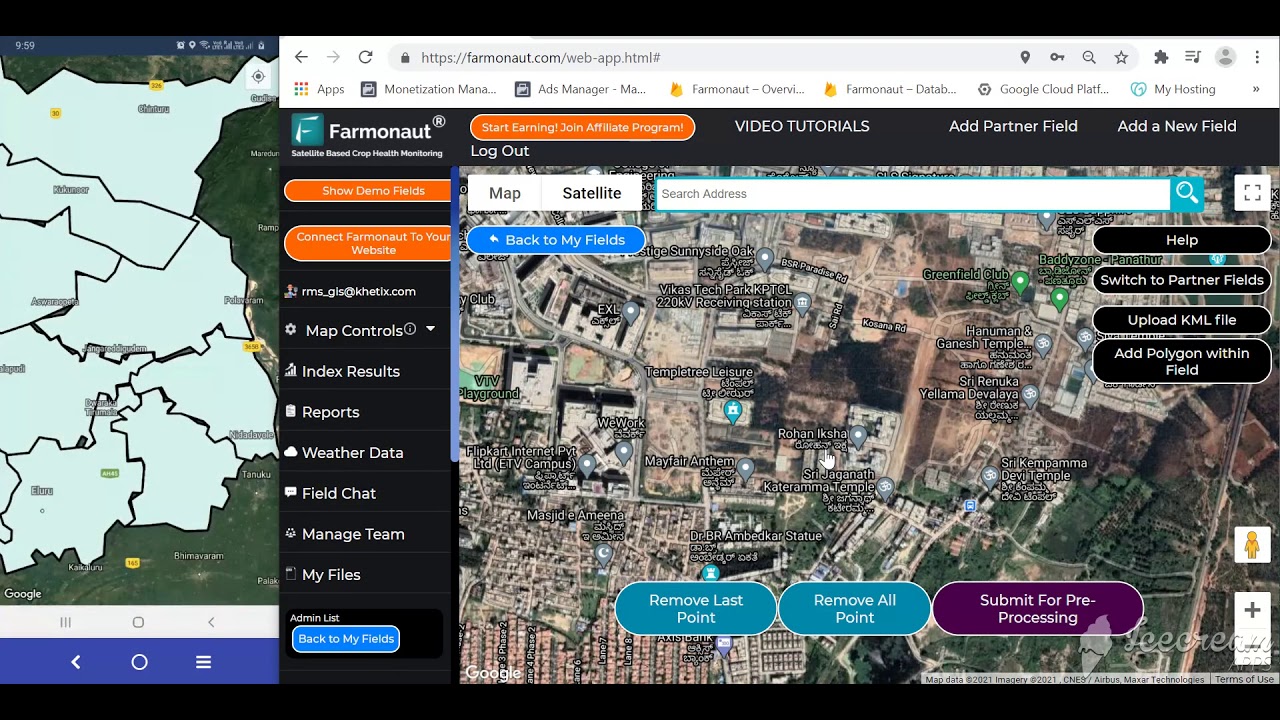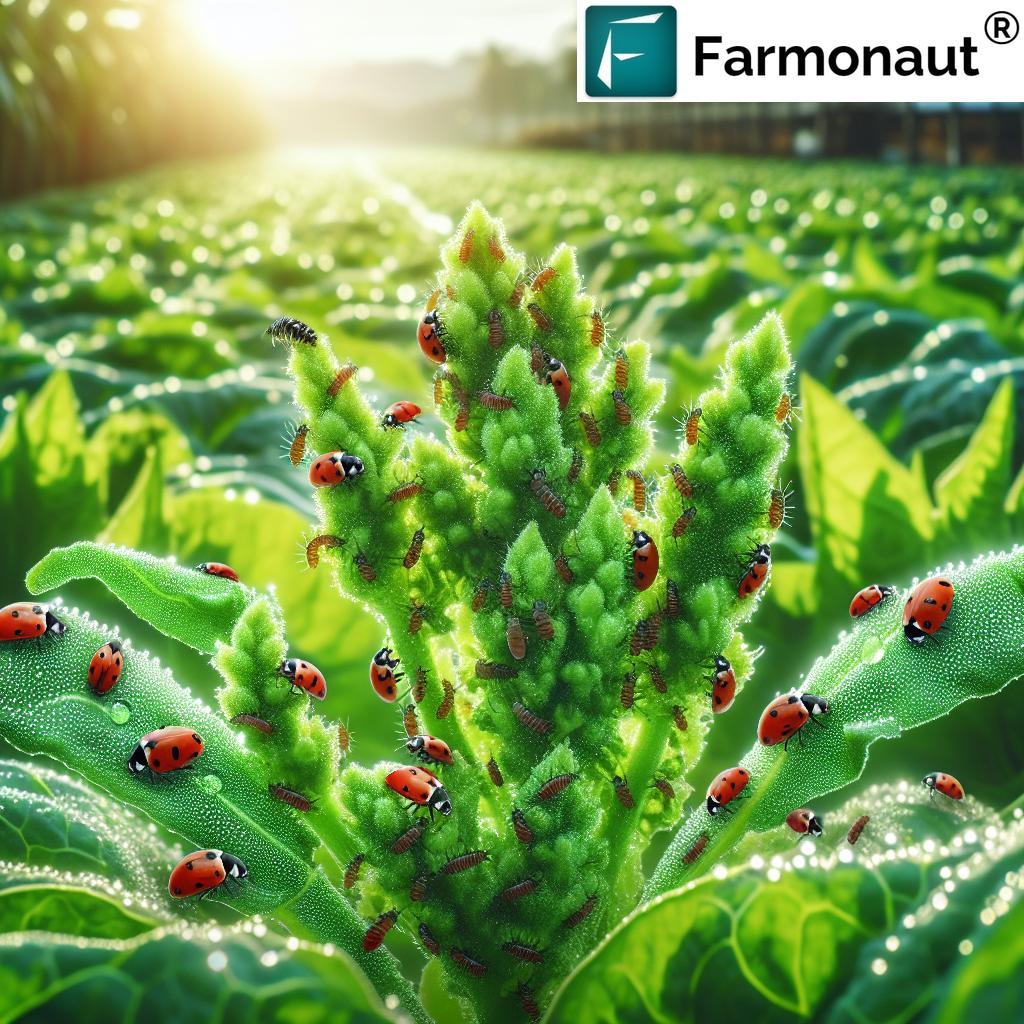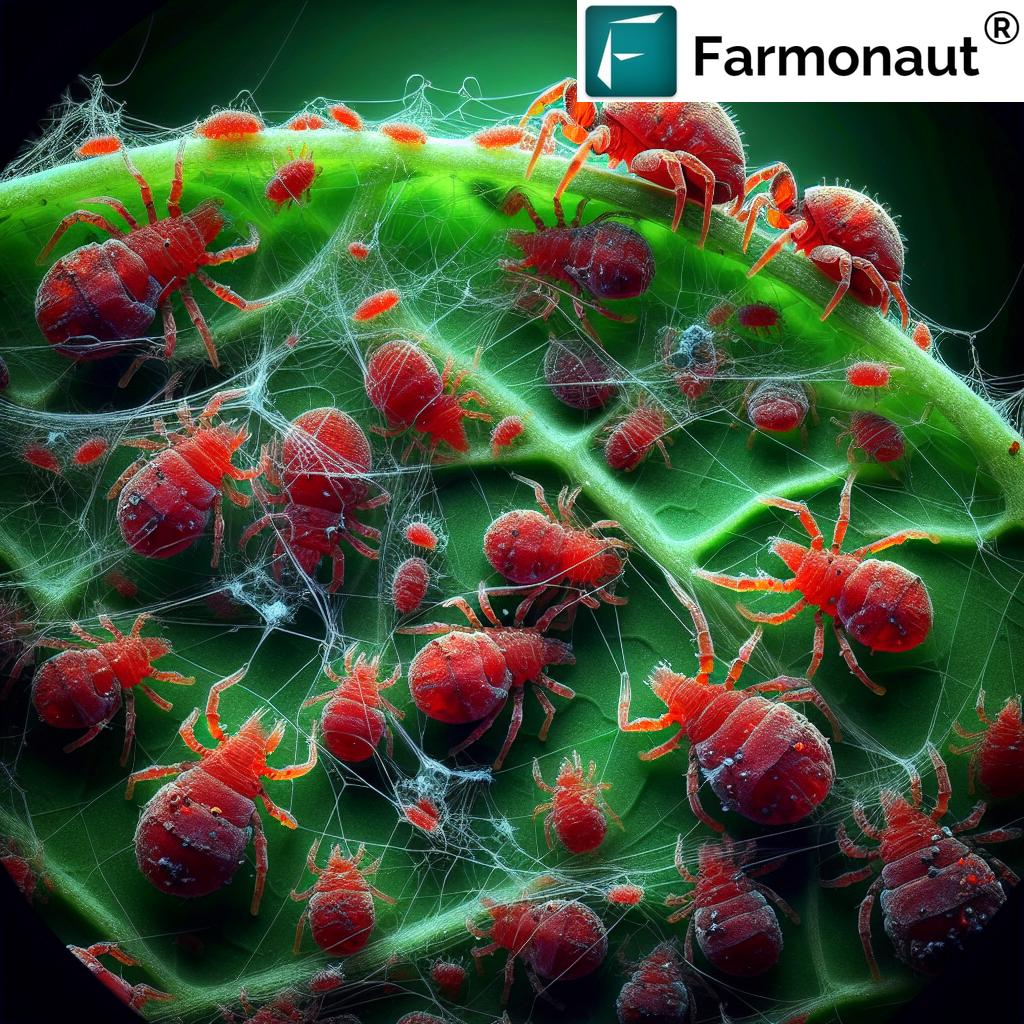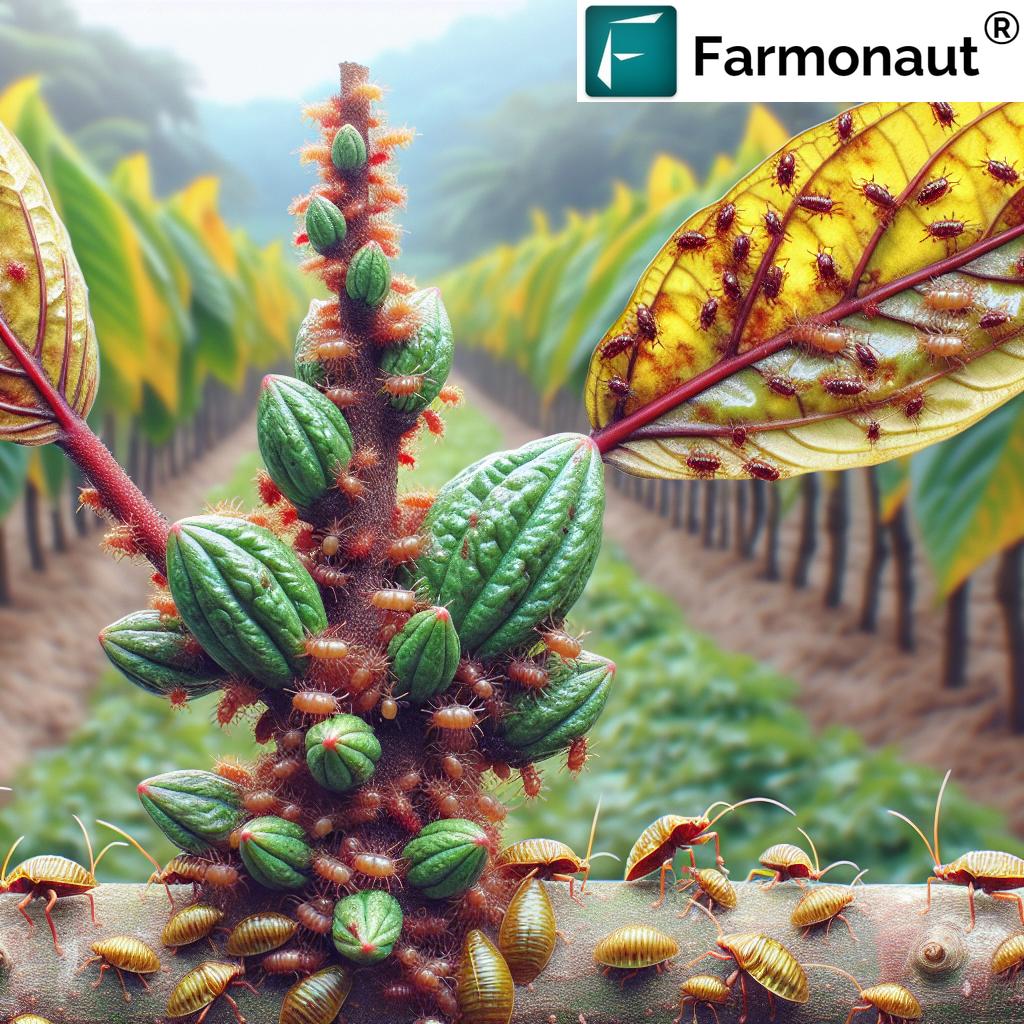Wheat Growing Stages: 7 Vital Steps for Maximizing Yield
“Wheat reaches its critical tillering stage around 21-30 days after sowing, directly impacting final yield potential.”
Introduction to Wheat Growth Stages and Their Critical Role in Maximizing Yield
Achieving optimal wheat yield depends on understanding the wheat growth stages—a series of distinct development phases that govern the crop’s productivity and health. From the instant the seeds are sown through to harvest, the wheat plant undergoes a predictable sequence of physiological changes. Each stage presents unique risks and opportunities, with timely interventions dramatically impacting grain quality and total production. For farmers and agronomists, recognizing these stages isn’t just scientific curiosity—it’s the roadmap to ensuring crop health, optimizing input use, and maximizing returns.
In this comprehensive guide, we’ll explore the seven critical stages of wheat development—from germination to maturity—and provide actionable, stage-wise strategies for timely interventions in wheat cultivation. We’ll explain environmental considerations, offer up-to-date management tips, and discuss the role of technology (such as Farmonaut’s real-time crop monitoring tools) in transforming wheat production.
Wheat Growth Stages Overview Table
| Stage Name | Estimated Duration (Days) | Main Characteristics | Critical Actions / Interventions | Impact on Yield / Quality |
|---|---|---|---|---|
| Germination & Seedling Establishment | 7–15 | Seed sprouting; first true leaf; root development | Sow in optimal conditions; monitor soil moisture; control pests | Foundation for healthy crops; poor establishment reduces plant population and grain yield |
| Tillering | 10–20 | Formation of tillers (shoots) from plant base | Maintain soil fertility; regulate irrigation; early weed/pest management | Determines shoot population; influences potential yield |
| Stem Extension (Jointing) | 7–14 | Plant height increases; nodes elongate above soil surface | Apply nitrogen; monitor for diseases; irrigation if dry | Affects nutrient allocation and head formation; improper care reduces grain number |
| Booting & Heading | 5–10 | Head forms within sheath, then emerges | Protect from heat/moisture stress; disease control | Final grain number set; stress reduces grain formation |
| Flowering (Anthesis) | 4–5 | Pollination and fertilization | Minimize stress; avoid chemical sprays | Determines fertility and pollination success; impact on grain set |
| Grain Filling & Ripening | 20–30 | Kernels fill and mature—watery, milky, mealy, hard, and harvest-ripe stages | Irrigate and feed as needed; protect from pests | Determines kernel weight and quality; drought/heat can reduce size/weight |
| Physiological Maturity & Harvest | 7–14 | Plant senesces; kernels harden | Monitor moisture; harvest at ≤15% kernel moisture | Ensures grain quality and prevents harvest losses |
Looking to automate your farm management or integrate powerful satellite crop insights in your own system? Explore the Farmonaut API for real-time field health, weather, and resource monitoring. For developer integration, see our API Developer Documentation.
1. Germination and Seedling Establishment: The Wheat Germination Process
The foundation for optimal wheat yield begins with robust germination and successful seedling establishment. The wheat germination process starts as soon as the seeds are sown into prepared soil and exposed to adequate moisture and suitable temperatures (generally 12°C to 25°C / 54°F to 77°F).
- Seed Germination: The seeds absorb water, activating enzymes that break down stored starches into energy required for initial growth. Within 3 to 7 days, seedlings emerge above the soil surface, utilizing stored nutrients in the endosperm for growth.
- Root and Shoot Emergence: First, the primary root (radicle) emerges, anchoring the seedling and beginning water/nutrient uptake. Soon after, the coleoptile (protective shoot) pushes through the soil, followed by the development of the first true leaf.
- Significance: Uniform and healthy seedling establishment lays the groundwork for the plant’s future development. Gaps or weak seedlings reduce the crop’s ability to intercept light, compete with weeds, and eventually lessen yield potential.
Key Interventions During Germination
- Soil Preparation: Ensure a well-leveled, weed-free, and friable soil bed with good water retention and drainage.
- Seed Quality: Use high-germination, certified seeds to ensure uniform crop establishment.
- Sowing Depth: Wheat seeds should be sown at an optimal depth (3–5 cm), as shallow or overly deep placement hampers emergence.
- Irrigation: Maintain adequate moisture during the germination phase, taking care to avoid waterlogging or drought stress.
- Fertilizer Application: Starter fertilizers, especially phosphorus, help support root and initial shoot growth.
Impact on Yield & Quality
Any setback during the germination stage—whether due to pests, poor moisture, cold stress, or seedling diseases—can dramatically reduce final grain number and yield. Make it a priority to monitor environmental conditions and implement early interventions for strong establishment.
“Proper timing of nitrogen application during the jointing stage can increase wheat grain yield by up to 20%.”
2. The Wheat Tillering Phase: Maximizing Shoot Potential
Once seedlings are established, the wheat plant enters the vital tillering phase, typically 10–20 days after emergence. This critical stage involves the production of additional shoots, known as tillers, from the base of the main stem.
- What is Tillering? Each wheat plant forms multiple tillers—secondary stems that can ultimately each produce a grain head of their own, increasing yield potential even if stand density is less than optimal.
- Timing & Environmental Influence: Tillering is promoted by cool temperatures, good sunlight, and moist soil. Environmental stresses (drought, lack of nutrients, competition from weeds) can restrict tiller development, resulting in fewer grain-bearing heads.
- Significance: The number of tillers formed directly impacts potential grain yield, especially in areas where planting density is variable or where some seedlings are lost to pests/disease.
Critical Interventions During Wheat Tillering Phase
- Fertilization: Apply nitrogen and phosphorus as recommended based on soil test and crop needs. Nitrogen is crucial—its timing here can have a lasting effect (see trivia above!) on grain yield.
- Weed Management: Early competition for light, water, and nutrients can reduce tiller number; implement timely weed control.
- Irrigation: Avoid water stress during tillering; even mild drought can sharply decrease tiller count.
- Disease and Pest Monitoring: Scout for pests and diseases, especially those affecting foliage and stem at the base, as these can hamper tiller formation and health.
Impact on Yield & Quality
Severe competition, lack of water, or nutrient deficiencies during this phase can reduce the number of effective tillers, leading to lower grain yield. Remember, not all tillers will set grain; the goal is to maximize the number of tillers contributing to harvestable grain heads by supporting their health during this critical stage.
3. Stem Extension (Jointing): Setting the Foundation for Grain Yield
As wheat matures, it progresses into the stem elongation stage or jointing stage. Here, the internodes of the stem lengthen, and visible nodes can be found above the soil surface. The growing point (apical meristem) moves upwards, initiating formation and development of the wheat head (inflorescence) deep within the stem.
- What is Jointing? “Jointing” refers to the point where the first nodes are visible above ground as the plant height increases. It is a signal that vegetative growth is transitioning to reproductive development—the plant is now allocating resources toward grain production.
- Timing: Occurs approximately 25–35 days post-sowing, but duration depends on variety, sowing date, and region.
- Sensitivity to Environmental Stresses: This period is highly vulnerable to stresses such as nitrogen deficiency, drought, disease, or physical damage, as the developing head is particularly sensitive.
Key Interventions for the Jointing Stage
- Nitrogen Application: The most important top-dressing of nitrogen should be done during jointing. Proper timing can boost grain yield significantly (refer to the trivia above).
- Water Management: Ensure soil moisture is non-limiting; both drought and waterlogging during jointing reduce head and kernel number formation.
- Disease & Pest Control: Prioritize protection against foliar and stem-borne diseases. Pests attacking stems can disrupt nutrient flow and head development.
- Plant Growth Regulators: Where relevant, use to control height and reduce lodging risk if intense fertilization is part of the regime.
Impact on Yield & Quality
Missed or poorly timed fertilization or irrigation during jointing can limit stem and head growth, reducing both grain number and final kernel weight. Consistent monitoring and timely interventions in wheat cultivation at this critical stage are essential for maximizing the effectiveness of inputs and guaranteeing high grain quality.
4. Booting and Heading: Critical Stages of Wheat Development
During booting, the wheat head (inflorescence) swells and is enclosed within the sheath of the flag leaf, giving the upper stem a distinctive, swollen appearance. This stage swiftly transitions to heading, when the head emerges fully from the sheath into open air.
- Booting: Visualized by the “boot” or bulge in the flag leaf sheath. The spikelet is fully formed but still protected inside.
- Heading: The head emerges for pollination. About 75%–100% of heads in a field should be visible before proceeding to flowering (anthesis).
- Environmental Risk: This is a critical period; environmental stresses such as drought or heat can disrupt spikelet formation and reduce final grain set.
Timely Interventions for Booting and Heading
- Stress Prevention: Ensure sufficient soil moisture to minimize water and heat stress. This impacts spikelet fertility and final grain number.
- Pest & Disease Control: Watch carefully for head blight, leaf rusts, and insect pests. Rapid intervention is vital at this stage.
- Fungicidal Sprays: If disease risk is high, apply fungicides ahead of heading, avoiding sprays during actual flowering/anthesis.
Impact on Yield & Quality
Poor management or environmental stress during booting and heading can substantially reduce spikelet fertility and grain set, limiting overall yield and affecting kernel uniformity and quality.
5. Flowering (Anthesis): The Most Sensitive Period in Wheat Yield Formation
A brief but supremely important stage, flowering (a.k.a. anthesis), affects not only the number of fertile kernels formed but also the timing of the entire wheat growth process that follows.
- Pollination: Lasts around 4–5 days. Wheat is largely self-pollinating; anthers appear, open, and fertilize the ovule within each floret.
- Kernel Set: Failure of pollination (due to stress, cold or heat, or rain during flowering) means florets abort and do not form grain, directly reducing yield.
- High Risk Phase: Environmental stresses (heat spike, drought, frost, hail) can be devastating, potentially destroying the crop’s potential.
Timely Interventions and Management During Anthesis
- Avoid Stress: Ensure adequate moisture—even short droughts can disrupt pollination and kernel development.
- Avoid Chemical Sprays: Insecticides, fungicides, or herbicidal sprays should never be applied during this window; they can harm florets and reduce fertility.
- Disease Scouting: Watch for fusarium head blight and other head/fungal diseases that can infect at flowering, affecting quality and kernel development.
Impact on Yield & Quality
Any stress or adverse event during anthesis may cause total or partial sterility, poor kernel set, and thus drastically lower grain yield and final product quality.
6. Grain Filling in Wheat: Kernel Weight, Quality, and Yield
After pollination is complete, the crop enters the grain filling phase—a critical period determining final kernel weight, nutritional quality, and thus overall wheat yield. The plant diverts photosynthates (sugars, nutrients, water) to each developing grain. This phase progresses through several visual and physiological sub-stages as follows:
- Watery Ripe (Feekes 10.5.4): Kernels are filled primarily with clear fluid.
- Milky Ripe (Feekes 11.1): Fluid inside kernels turns milky as starch synthesis begins.
- Mealy Ripe (Feekes 11.2): Kernels reach a soft, doughy consistency—signaling active filling of grain with carbohydrates, proteins, and micronutrients.
- Hard Ripe (Feekes 11.3): Kernels become firm enough to break with a thumbnail, but are not yet dry.
- Harvest Ripe (Feekes 11.4): Kernels are fully hardened and cannot be split with a thumbnail—they are almost ready for harvest.
Interventions for Optimal Grain Quality During Ripening
- Irrigation: Regular water supply during initial grain filling (milky to mealy stages) is vital—moisture stress can reduce kernel size and weight.
- Nutrient Management: Ensure adequate potassium and micronutrients for efficient translocation to the kernel.
- Disease & Pest Protection: Late-season diseases (e.g., rusts, aphids), if unchecked, can drain photosynthates meant for grain filling.
- Monitor Maturity: Track kernel development and moisture content for optimal harvest timing.
Impact on Yield & Quality
Grain weight and flour/bread quality are defined at this stage. Water or heat stresses during key filling stages will reduce yield and can produce shriveled kernels and low protein content.
7. Wheat Maturity and Harvest: Ensuring Quality and Minimizing Losses
The final wheat growth stage—physiological maturity—signals readiness for harvest. During this period:
- Plant Senescence: Leaves, stems, and roots cease photosynthesis and start to yellow and dry up as nutrients are remobilized into the kernels.
- Kernel Maturity: Kernels acquire their final size and dry matter. Physiological maturity is achieved when grain reaches 30–35% moisture, but harvest is optimally performed at 13–15% moisture to limit drying costs and postharvest losses.
- Visual Markers: Heads and upper leaves completely turn golden-yellow or brown; kernels are hard, dry, and not easily marked by a thumbnail.
Best Harvest Practices for Wheat
- Monitor Moisture: Timely harvest is essential. Too early (kernels too moist) results in grain spoilage; too late increases shattering, weather damage, and field loss.
- Machine Calibration: Ensure combines are properly set to avoid grain damage and threshing losses during harvest.
- Postharvest Management: Dry grain quickly to storage moisture levels (<12%) to preserve quality and minimize pests/fungi.
Impact on Yield & Quality
Harvesting at the correct stage ensures maximum grain yield and optimal quality. Delays lead to sprouting, shattering, or fungal contamination, adversely impacting market price and storage life.
Leverage Technology for Optimal Wheat Yield
At Farmonaut, we are dedicated to making precision agriculture accessible for wheat farmers worldwide. Our advanced satellite monitoring tools help track every wheat growth stage to support timely interventions that improve grain yield and quality:
- Real-Time Crop Health: Satellite imagery analyzes NDVI, soil moisture, and vegetation health
- Jeevn AI Advisory: AI-driven, personalized recommendations for each wheat growth stage
- Blockchain Traceability: Secure tracking of input, harvest timing, and quality across the entire wheat supply chain
- Resource and Fleet Management: Optimize fuel use, reduce downtime, and ensure safety for large farming operations
- Carbon Footprint Tracking: Monitor and reduce emissions for compliance and sustainability
Our platform is available via Android, iOS, web apps, and direct API integrations. This empowers farmers, agri-businesses, and governments to implement the most effective interventions at the right time, safeguarding crop productivity and farm profitability.
To experience the benefits of data-driven agriculture for yourself, get started with Farmonaut in your region using our app or request a demo for your agribusiness today!
Farmonaut Subscription Plans
Our flexible subscription model provides cost-effective solutions for field-scale satellite monitoring, AI advisory, traceability, and more, tailored to the needs of individual farmers, large agribusinesses, and researchers.
FAQ: Wheat Growth Stages & Maximizing Yield
Q1: Why is understanding wheat growth stages critical for farmers?
Knowing the wheat growth stages enables farmers to make timely interventions—with irrigation, fertilization, pest and disease management—precisely when the crop needs them most, directly improving grain yield and quality.
Q2: What environmental stresses most impact wheat yield?
Drought, heat spikes during flowering and grain filling, nutrient shortages (particularly nitrogen at jointing), and diseases in the heading/anthesis stages are among the most damaging. Proactive monitoring is essential.
Q3: How do I determine the optimal time to harvest wheat?
Harvest when kernels reach 13–15% moisture and the field is uniformly golden/brown. Harvesting too early leads to poor quality, too late increases field and storage losses.
Q4: Can I automate tracking of crop health and growth stages?
Yes. Using platforms like Farmonaut, you can remotely monitor NDVI, soil moisture, canopy cover, and receive AI-driven stage-specific recommendations for every growth stage. This saves time and improves decision quality.
Q5: What is the Feekes growth stage scale?
The Feekes scale is a standardized system describing the wheat growth stages—from germination (Feekes 1) through tillering, jointing, heading, anthesis, grain filling, and maturity (Feekes 11). It aids in precise field management and communication among stakeholders.
Conclusion: Mastering Wheat Stages for Sustainable, Profitable Yield
The journey from wheat seed to harvested grain is marked by seven distinct growth stages, each with vital management checkpoints to safeguard yield and quality. By understanding the physiological and environmental significance of each stage, farmers can implement timely interventions in wheat cultivation—protecting against stress, optimizing inputs, and ensuring healthy crop development. Integrating advanced monitoring and decision-support systems, like those we offer at Farmonaut, further empowers agriculturists to meet the challenges of modern wheat production.
Stay diligent, make data-driven choices, and embrace the latest technology for every wheat growth stage—the result is sustainable farming, resilient fields, and excellent grain returns.


